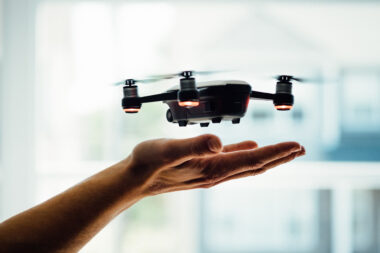The advent of foldable smartphones has ushered in a new era of mobile device design, challenging traditional notions of form and function. This technical research article delves into the intricate engineering and technological advancements behind foldable smartphones. From flexible displays to hinge mechanisms, we explore the cutting-edge components that make foldable phones a reality and discuss the challenges and future prospects in this evolving field.
Technical components that enable foldable smartphones
- Flexible Display:
- OLED/AMOLED Technology: Foldable smartphones rely on OLED (Organic Light-Emitting Diode) or AMOLED (Active-Matrix Organic Light-Emitting Diode) display technology. These displays can bend without losing functionality, providing vibrant colors and high contrast.
- Flexible Substrate:
- Polyimide: Polyimide is a flexible substrate material that allows the display to bend without breaking. It is commonly used to support the foldable display.
- Hinge Mechanism:
- Dual-Axis Hinges: These hinges allow the smartphone to fold along two axes, enabling various foldable form factors. The precision engineering of these hinges is crucial for durability and smooth folding.
- Foldable Casing:
- High-Strength Polymers and Metals: The casing of foldable smartphones is made from high-strength polymers or metals, balancing durability and flexibility. These materials contribute to the overall structural integrity of the device.
- Programming and Software Integration:
- Adaptive UI/UX Design: The software is designed to adapt to different display states, transitioning seamlessly between folded and unfolded modes.
- Operating Systems (e.g., Android, iOS): Foldable smartphones run on operating systems that support the unique features and form factors of foldable displays.
- Sensors:
- Accelerometers and Gyroscopes: These sensors detect the device’s orientation and motion, allowing for adaptive screen behaviors and gesture controls.
- Proximity Sensors: Proximity sensors are used to detect the presence of objects near the display, influencing power management and preventing unintended touches.
- Battery Technology:
- Flexible Batteries: Batteries are designed to bend and flex along with the device, ensuring power supply without compromising the foldable form factor.
- Manufacturing Technologies:
- Clean Room Manufacturing: The manufacturing process for foldable smartphones often involves clean room environments to minimize dust and contaminants during fabrication.
- Nanotechnology: Nanotechnology plays a role in creating nanoscale patterns and materials, contributing to the precision required for foldable displays.
- 3D Printing (in Prototyping):
- Selective Laser Sintering (SLS): 3D printing, specifically SLS, is used in the prototyping phase for rapid iteration and design testing.
- Connectivity Components:
- Antennas and Wireless Connectivity: These components are integrated into the design to ensure seamless network connections, including support for 5G technology.
- Durability Enhancement Technologies:
- Advanced Coatings: Protective coatings are applied to the display and other components to enhance durability and resist scratches.
- Environmental sensors (optional):
- Temperature and Humidity Sensors: Some foldable smartphones may include environmental sensors to monitor temperature and humidity levels, contributing to optimal performance.
Softwares used
- CAD (Computer-Aided Design) Software:
- Purpose: CAD software is used for creating detailed 3D models of the foldable smartphone’s design, including the hinge mechanisms, casing, and internal components.
- Examples: AutoCAD, SolidWorks, and CATIA.
- Simulation and Modeling Software:
- Purpose: Simulation tools help engineers and designers test the structural integrity, durability, and performance of foldable smartphone components in a virtual environment.
- Examples: ANSYS, COMSOL Multiphysics, LS-DYNA.
- Electronic Design Automation (EDA) Software:
- Purpose: EDA software is employed for designing and simulating electronic components, such as flexible printed circuit boards (FPCBs) and other internal electronics.
- Examples: Altium Designer, Cadence Allegro, and Mentor Graphics PADS.
- Programming and Development Platforms:
- Purpose: Software development tools are used to create and optimize the operating system, user interface, and applications for foldable smartphones.
- Examples: Android Studio (for Android-based devices), Xcode (for iOS-based devices), Visual Studio.
- User Interface (UI) Design Software:
- Purpose: UI design tools are essential for creating adaptive and user-friendly interfaces that can seamlessly transition between folded and unfolded states.
- Examples: Figma, Sketch, Adobe XD
- Prototyping Tools:
- Purpose: Prototyping software helps in creating interactive models and simulations of the foldable smartphone’s user interface and overall user experience.
- Examples: InVision, Marvel, Proto.io.
- Version Control Systems:
- Purpose: Version control systems enable collaborative development and help manage changes to the software code and design files.
- Examples: Git, SVN (subversion), Mercurial.
- 3D Printing and Prototyping Software:
- Purpose: 3D printing and prototyping tools are used in the early stages of design for creating physical prototypes of components.
- Examples: Ultimaker Cura, Formlabs PreForm, and Autodesk Fusion 360.
- Manufacturing Execution Systems (MES):
- Purpose: MES software helps manage and control the manufacturing process, including production scheduling, quality control, and resource management.
- Examples: Siemens Opcenter, SAP MES, Wonderware MES
- Product Lifecycle Management (PLM) Software:
- Purpose: PLM software aids in managing the entire lifecycle of the foldable smartphone, from design and development to manufacturing and maintenance.
- Examples: PTC Windchill, Siemens Teamcenter, Dassault Systèmes ENOVIA
- Collaboration and Project Management Tools:
- Purpose: Collaboration and project management platforms facilitate communication and coordination among team members working on different aspects of the foldable smartphone project.
- Examples: Slack, Microsoft Teams, Asana, and Jira.
- Quality Assurance and Testing Tools:
- Purpose: Testing tools are crucial for ensuring the functionality, performance, and reliability of foldable smartphones under various conditions.
- Examples: Appium, Selenium (for software testing), and Instron (for material testing).
- Analytics and Monitoring Tools:
- Purpose: Analytics tools provide insights into user behavior and performance metrics, helping improve the overall user experience.
- Examples: Google Analytics, Mixpanel, and New Relic.
- Environmental Simulation Software:
- Purpose: Simulation tools are used to assess the impact of environmental factors (temperature, humidity) on the materials and components of foldable smartphones.
- Examples: ANSYS Mechanical, SimScale.
- Augmented Reality (AR) and Virtual Reality (VR) Development Platforms:
- Purpose: AR and VR development tools enable the creation of immersive experiences and simulations related to foldable smartphone design and usage.
- Examples: Unity, Unreal Engine.
Conclusion
Unraveling the technical intricacies of foldable smartphones reveals a synergy between flexible materials, precision engineering, and adaptive software. As these devices continue to evolve, the seamless integration of hardware and software technologies will play a pivotal role in shaping the future of mobile computing.



